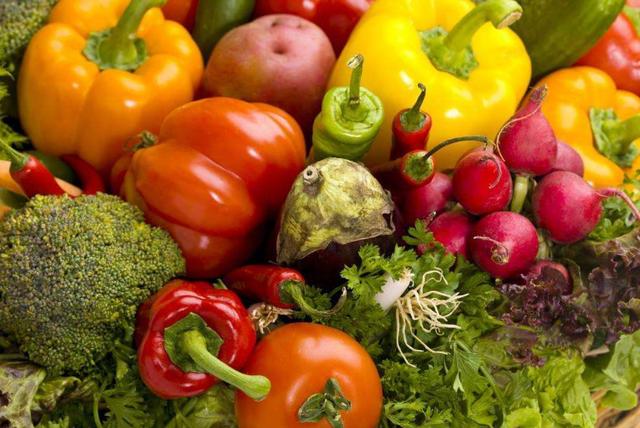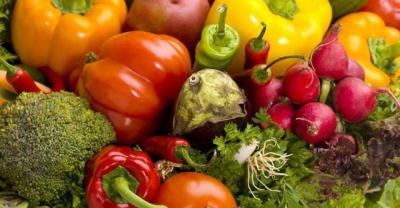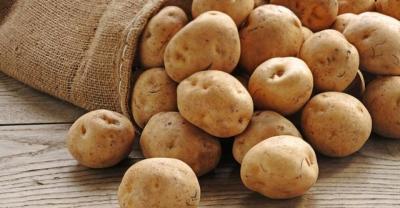In 2017, experts explained in detail which vegetables are the best for diabetes.
Suffering from diabetes, the biggest headache is what to eat will not lead to an increase in blood sugar, aggravating diabetes. Fruits with a lot of sugar must not be eaten too much. it seems that vegetables do not contain too much sugar, so can they be eaten without scruples? Of course the answer is no! So, what vegetables should diabetics eat? Sugar APP experts here tell you 15 kinds of vegetables, which can help people with diabetes lower blood sugar.

What kind of vegetables should diabetes eat?
Vegetables are indispensable food for people every day, and they are characterized by rich vitamins, minerals and dietary fiber. These nutrients are very important for people with diabetes, and some of them have a good therapeutic effect on diabetes. Such as vitamin C, vitamin B, calcium, phosphorus, iron, magnesium and so on. The dietary fiber in vegetables can increase the sense of fullness, keep the stool unobstructed, and help to reduce blood sugar.
So, are all vegetables good for people with diabetes? No. Vegetables are divided into leafy vegetables, rhizomes, melons and fruits, pods, cauliflower, bacteria and algae. They contain different amounts of carbohydrates, including leaves and melons, such as Chinese cabbage, Chinese cabbage, rape, spinach, wax gourd, eggplant, balsam pear, cucumbers, tomatoes and so on. Diabetic patients in addition to the right amount of staple food, animal food and oil, the daily intake of these vegetables can not be strictly limited, generally in 500 grams or so. Do you understand what vegetables to eat for diabetes?
But potatoes, legumes and vegetables with high carbohydrates should not be eaten more, and the amount of staple food must be reduced accordingly. In addition, onions and garlic seedlings contain about 10% sugar, so eating too much is not conducive to blood sugar control.
15 vegetables for people with diabetes:
1. Pumpkin:
In recent years, domestic and foreign studies have shown that pumpkin is an ideal food for the treatment of diabetes. Pumpkin contains a lot of pectin, when pumpkin and starch food are eaten together, it will increase the viscosity of stomach contents and delay gastric emptying. Pectin forms a gelatinous substance after fully absorbing water in the intestines, which can delay the absorption of sugar in the intestines and reduce postprandial blood sugar. In addition, pumpkin is rich in trace element cobalt, which is a necessary trace element for human islet cells to synthesize insulin, which can promote insulin secretion and reduce blood sugar.
Food note: do not eat too much each time, because pumpkins also contain carbohydrates, if not controlled, the total calories will "exceed the standard" and cause blood sugar to rise; pumpkins are warm, and it is easy to "get angry" if you eat more. Yang Sheng physique should not eat too much; do not eat pumpkins that have been placed for too long.
2. Spinach:
The nature is sweet and cold, relieves thirst and moistens dryness, and returns to the lung and stomach meridian. It has the effect of moistening dryness and clearing heat, regulating qi and regulating blood. It is suitable for diabetes mellitus with stuffy chest and diaphragm and epigastric riffraff.
Spinach contains more oxalic acid, and calcium-rich food cooked together, easy to form calcium oxalate, is not conducive to human absorption, but also has adverse effects on the intestines and stomach, should be paid attention to when cooking. It is the best vegetable to assist in the treatment of diabetic thirst.
3. Lentils:
It is rich in soluble cellulose, which can reduce blood sugar, triglyceride and harmful cholesterol. Cooking with lentils of 30g to 50g, once a day, is effective for patients with diabetes mellitus complicated with dyslipidemia.
4. Celery:
Cool, sweet and pungent, non-toxic; into the lung, stomach, liver meridian, is a high-fiber food, it through intestinal digestion to produce a kind of lignin or intestinal fat substance, this kind of substance is a kind of antioxidant, often eat celery, especially celery leaves, to prevent hypertension, arteriosclerosis and so on are very beneficial, and have auxiliary treatment effect.
Celery is cool and slippery, so the spleen and stomach are deficient and cold, and those with slippery intestines should be careful.
5. Onion:
S-methylcysteine sulfoxide contained in onions can reduce blood sugar and blood lipids. Onions also contain sulfonylurea butyric acid, which can play a hypoglycemic role by promoting the utilization of sugar by cells. Onion also has the effect of reducing blood lipids, reducing blood viscosity and improving atherosclerosis. Regular consumption can prevent the occurrence of cardiovascular and cerebrovascular complications of diabetes. American scientists have also found that onions contain prostaglandin A, which can reduce peripheral vascular resistance, lower blood pressure, increase renal blood flow and urine volume, and promote the excretion of sodium and potassium, which is of great help in preventing kidney complications of diabetes.
Food tips: acute infectious diseases should not be eaten; patients with glaucoma and cataracts should not eat too much; in order to avoid the destruction of nutrients, stir-frying should not be heated for too long.
6. Balsam pear:
It is known as "plant insulin". Pharmacological tests found that balsam pear saponins contained in balsam pear not only have the effect of similar to insulin, but also stimulate the release of insulin, which has a very obvious hypoglycemic effect. Some people take Momordica charantia saponins orally to treat Ⅱ diabetes. Therefore, the proper intake of balsam pear in patients with diabetes is conducive to the control of blood sugar.
Food tips: patients with chronic enteritis should not eat too much; when eating, it is appropriate to stir-fry quickly, not for a long time of stewing.
7. Cucumber:
Sweet and cool, sweet and crisp, with the effect of relieving fever and relieving thirst. Modern pharmacological studies have shown that cucumber contains only 1.6% sugar and is a commonly used substitute food for diabetics, from which vitamin C, carotene, cellulose and minerals can be obtained. The propanedioic acid contained in cucumbers can inhibit the conversion of sugars to fat in the human body. Obese diabetic patients with hypertension, eat 100 grams of cucumber every day, which is of great benefit. Diabetic diet.
8. Lotus root
Sweet taste, cold nature. Return to the heart, spleen and stomach meridians. Raw use has the effect of clearing heat and relieving thirst, cooling blood and stopping bleeding, dispelling blood stasis and awakening alcohol, while mature use has the effect of invigorating spleen and stomach, nourishing yin and tonifying blood, promoting muscle and stopping diarrhea. It is suitable for diabetes mellitus with excessive drinking, hunger and weight loss, especially for those with hematemesis, hematemesis and hot shower.
9. Radish (radish):
The taste is pungent, sweet and warm. Return to the lung and stomach meridian. It has the effect of eliminating stagnation, resolving phlegm and heat, lowering qi, broadening and detoxifying, and is suitable for fullness of diabetes mellitus.
10. Leek:
The taste is pungent and the nature is warm. Enter the liver, stomach and kidney meridians. It has the effect of regulating qi, dispersing blood and detoxification. it is suitable for patients with hyperlipidemia, coronary heart disease and diabetes.
11. Yam:
It can effectively improve hyperglycemia, and the sticky ingredients in yam are also formed by mucin. Mucin can wrap other foods in the intestine, causing the sugar to be absorbed slowly. This effect can not only inhibit the sharp rise of blood sugar after meal, but also avoid excess insulin secretion and better regulate blood sugar.
Chinese yam also contains effective ingredients such as magnesium and zinc essential for insulin secretion, as well as vitamin B1 and vitamin B2. These ingredients promote the metabolism of glucose in the blood. In addition, yam also contains amylase, an enzyme that digests sugars so that sugars no longer accumulate in the blood.
12. Tremella:
Ganping nature, with the role of nourishing yin and regulating dryness, nourishing fluid and nourishing stomach, is not only rich in nutrition, but also has high medicinal value, and is known as the "pearl of bacteria". Tremella fuciformis is low in heat and rich in food fiber, which can delay the increase of blood sugar in patients with diabetes.
In recent years, it has been reported that Tremella fuciformis contains more Tremella polysaccharide, which has an effect on the hypoglycemic activity of insulin. In animal experiments, it was found that Tremella polysaccharide could prolong the action time of insulin in animals from 3-4 hours to 8-12 hours. Therefore, people with diabetes should often eat Tremella. Usage: 15 to 20 grams of Tremella fuciformis, take it once a day after stewing.
13. Tomato:
Taste sweet, sour, cool, slightly cold. It can clear heat and quench thirst, nourish yin, cool blood, and return to the liver, stomach and lung meridians. It has the effects of invigorating body and relieving thirst, invigorating stomach and digestion, clearing heat and detoxification, cooling blood and calming liver, tonifying blood and nourishing blood and increasing appetite; reducing blood fat and blood pressure, diuresis and excreting sodium contains vitamin C, rutin, lycopene and fruit acid, which can reduce blood cholesterol and prevent atherosclerosis and coronary heart disease. It also contains a lot of potassium and alkaline minerals, which can promote the excretion of sodium salt in blood, reduce blood pressure, diuresis and detumescence, and play a good auxiliary role in the treatment of hypertension and kidney disease.
Reduce blood pressure in patients who often have gingival bleeding or subcutaneous bleeding, eating tomatoes can help improve symptoms. Suitable for febrile diseases, thirst, loss of appetite, habitual gingival bleeding, anemia, dizziness, palpitation, hypertension, acute and chronic hepatitis, acute and chronic glomerulonephritis, night blindness and myopia.
Note: patients with acute enteritis, bacillary dysentery and active ulcers are not suitable for consumption.
14. Lettuce:
Food Tip: in order to avoid the loss of a large number of water-soluble vitamins, wash before cutting; lettuce leaves have higher nutritional value than stems and should be eaten together; in order to avoid destroying the ascorbic acid contained in lettuce, copper containers should not be used to store or cook lettuce. It is rich in nicotinic acid, which is an insulin activator. Regular consumption is helpful for the prevention and treatment of diabetes. Lettuce can stimulate gastrointestinal peristalsis and play an auxiliary role in the treatment of gastroparesis and constipation caused by diabetes. Lettuce contains 27 times more potassium ions than sodium ions, which can promote urination and lower blood pressure.
15. Corn:
Corn can be eaten not only as a staple food for diabetics, but also as a vegetable for cooking. Corn has the effect of reconciling the body, appetizing, facilitating urine, reducing blood sugar and lowering blood lipids. For patients with chronic gastritis, urinary calculi, diabetes, hyperlipidemia and other diseases, it has a very good edible value, not only that, for patients who are prone to edema, eating more corn can also solve the problem of edema.
From: official account-Sugar Angel Home.
- Prev

Tomatoes are both fruits and vegetables. What are the benefits of eating tomatoes often?
Tomato is a very common food, but it plays an important role in the treatment of diseases. Tomatoes are very nutritious and usually eat more tomatoes.
- Next

Why don't meat, vegetables and fruits taste as good as they used to be?
Now many people have this feeling, that is, the meat and vegetables they buy now are not as fragrant as they were when they were young, such as roast pork and beef.
Related
- Where is it suitable to grow horseradish in China? it is expected to see the middle altitude horseradish in Alishan.
- How to prevent tomato virus disease reasonably? (Control methods included)
- Many people like to plant towel gourd on the balcony. What are the main points of this method and management?
- What crops can chili peppers be mixed with?
- Fertilization techniques and matters needing attention in Tomato
- What are the grafting techniques for peach seedlings in spring?
- Harm and control methods of root swelling disease of Chinese cabbage
- What are the pests of sweet potatoes? How to prevent and cure it?
- Symptoms, causes and Control methods of navel Rot in Tomato
- The cause of "Cucumber rotten bibcock" in Farmers' planting Cucumber and its Control Plan

